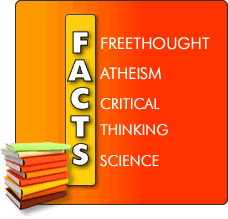An initial problem is the idea of the 'end of the world'. The King James Bible translates "end of the age" as "end of the world" at Matthew 24:3, illustrating that a conventional religious concept of 'age', understood as a social framework of meaning for the zeitgeist, is readily confused with 'world', in the sense of worldview or paradigm, and then this is in turn linked to the apocalyptic ideas of the four horsemen and second coming of Jesus Christ.
On this 'end of the age' model, the Mayan prophecy, whose provenance is somewhat dubious, is interpreted as a marker of a paradigm shift, the slow emergence of a new way of thinking involving a natural spirituality and respect for indigenous cultures, structured arould the astronomical cycle of precession of the equinox, the 25765 year long wobble of earth's axis. New Age thinking links this clicking over of the Mayan calendar Long Count to the shift of the equinox point from Pisces to Aquarius some time this millennium.
My study of this topic has focused on a search for any possible scientific meaning. It is widely thought that precession has no actual impact on the earth. But the fact is that precession dumped a mile thick pile of ice on New York City 20,000 years ago. The science of climate change understands precession as the driver of the 21600 year cycle of glaciation, due to changing levels of light and dark around the seasons. The low point of the current cycle occurred in 1246 AD, when the December solstice passed the perihelion point, the orbital position closest to the sun. Perihelion is now on 2 January as Phil Plait recently explained at Slate.
So what does all this have to do with the Mayan prophecies of the end of the world? The Long Count, a disputed calendrical period, is asserted by New Age writers to have a period of 5125 years, or 13 Baktuns of 395 years. In terms of the orbital dynamics of precession and climate, this period is close to a quarter of the glaciation cycle of 21600 years (actually 1/4 of the real cycle is more like 5400 years, and complicated by factors such as obliquity and ellipticity). The high point of this cycle was the dawn of the Holocene about 12000 years ago, when the June solstice was at perihelion, the start of the current interglacial period.
If we divide this 'Great Year' climate cycle of 21600 years into four 'seasons', then 'summer' lasted for about 5400 years until 4500 BC when the equinox was at perihelion, 'autumn' ran from then to 1246 AD, and we are now in a cosmic winter, at the start of a 10,000 year ascent to the next 'golden age' of cosmic summer. It is intriguing on this analysis that 'autumn' matches to the period defined by the Abrahamic faiths as the 'fall' from grace since Adam was a boy (not) in 4004 BC, and has a rough match to the now ending Mayan Long Count. Here is a diagram illustrating this orbital climate cycle over roughly 20,000 years.[/URL]

A further error in the common interpretation of the Mayan prophecy is the fact that the solstice already crossed the galactic equator in 1998, and never goes near the galactic centre. However, the solstice point moves so slowly, one degree of arc every 71.6 years, or a bit faster if you factor in the spinning of the orbit itself, that 2012 is a reasonable guess. But we don't really know if the Mayans made that guess, especially since the fanatic Spanish burnt nearly all their books. Anyway, it is still interesting in terms of the naked eye astronomy of precession.
The point where the ecliptic (zodiac) crosses the Milky Way galaxy can readily be understood as the 'Chi Rho' cross point used in Christianity and seen by Constantine at the battle of Milvian Bridge. Plato also discusses this point in Timaeus as the X marking the meeting of the same (the galaxy) and the different (the zodiac). Apologies if that is more than you need to know, but it does illustrate how this material is central to naked eye cosmology.
There are many dates that could be considered the 'dawn of the Age of Aquarius', based on a wide range of methods, but none have any demonstrated dynamic reality like the Milankovitch cycles. The most interesting apparent resonance is that the solar system 'throbs' with a period of 178.9 years, the wave period of the centre of mass caused by the cycles of the gas giants, and this is precisely 1/144th of the earth's orbital wobble period of 21765 years, so the zodiac age period of 2148 years stands in 1/12 resonance with both the earth's gyroscope wobble and the pulse of the sun. But that seems to be just an interesting artifact. There is certainly no dynamic effect of distant stars, so all these cycles have to be linked to actual mechanisms of our solar system if they are to have any reality.



